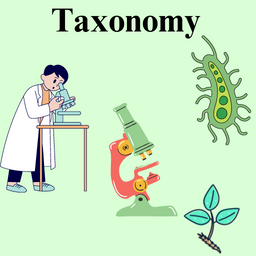The Nursing Taxonomy or Classification. Nursing taxonomies and classifications are systems for organizing and describing nursing practice elements like diagnoses, interventions, and outcomes.
These systems, developed by organizations like NANDA (North American Nursing Diagnosis Association), ICNP (International Classification for Nursing Practice), NIC (Nursing Interventions Classification), and NOC (Nursing Outcomes Classification), provide a standardized language for nurses to communicate and document their care. This standardization helps improve communication, data collection, and research in nursing.
What is Nursing Taxonomy? Nursing Taxonomy or Classification
A taxonomy is an organizational structure for a set of concepts or terms that helps identify relationships among these concepts and facilitates their use. Fleishman and Quintanses (1984) define taxonomy as “the theoretical study of systematic classifications, including their bases, principles, procedures, and rules; the science of how to classify and identify” (p. 22).
Synonyms of Taxonomy
In recent years, the term taxonomy has become more prevalent in nursing, particularly with the use of nursing knowledge classifications (e.g., classifications of nursing diagnoses, interventions, and outcomes). It is important to distinguish the term “taxonomy” from other related terms:
- Standardized Language: Agreed-upon terms for specific objects, conditions, or actions, with definitions; also known as common language.
- Classification: A set of concepts or terms that brings sense and structure to some aspect of reality. Sometimes used interchangeably with taxonomy, though taxonomy is more accurately viewed as the organizing structure for the classification’s terms.
- Aristotelian Classification: A binary classification (present or not present) used in fields such as biology, geology, and physics. It can be monothetic (a single set of conditions) or polythetic (a number of shared characteristics) (Bowker & Star, 1999).
- Prototype Classification: Creates a broad picture extended by metaphor and analogy; involves using a “best example” to identify reasonable resemblance (Bowker & Star, 1999). This type is used more in sociolinguistics, anthropology, and nursing.
- Standards: Agreed-upon rules for producing objects that help them work together over distances; they have significant inertia and can be difficult and expensive to change (Bowker & Star, 1999).
- Terminology: The words or vocabulary for concepts. Terminology can be synonymous with standardized language if the terms are agreed upon and have standardized definitions. It is sometimes used interchangeably with classification, although it is more accurate to consider terms as the vocabulary within a classification.
Need for Nursing Classification
Naming and classifying are essential for communication and creating order in our lives. Everyday classifications, such as sorting dirty and clean dishes or organizing books by topic, help establish order.
Nursing classifications identify and organize nursing knowledge, making the work of nurses visible. Standardized nursing language in these classifications allows integration into existing healthcare memory systems, such as the Systematized Nomenclature of Medicine (SNOMED) or the information systems in healthcare agencies.
An excellent reference on classification is the book “Sorting Things Out: Classification and its Consequences” by Bowker and Star (1999). The book includes information and analysis on the International Classification of Disease (ICD), race classification under apartheid in South Africa, the classification of viruses and tuberculosis, and the Nursing Interventions Classification (NIC).
In the context of nursing in the United States, there are three comprehensive, clinically usable, and current clinical nursing classifications: NANDA, NIC, and NOC. Each of these classifications is organized in its own taxonomy as well as a common taxonomy, the Taxonomy of Nursing Practice. They have a similar structure comprising Domains (the most abstract level) and Classes (a less abstract level grouping diagnoses, interventions, or outcomes).
Clinical Judgment
Diagnoses are clinical judgments about individual, family, and community responses to problems or life processes. These diagnoses provide the basis for selecting nursing interventions to achieve outcomes for which the nurse is accountable. The NANDA Taxonomy 2 (NANDA, 2003) was adopted by NANDA members in April 2000.
NANDA Taxonomy 2 consists of 13 domains (e.g., Health Promotion, Nutrition) and 46 classes (e.g., Health Awareness, Ingestion). Each domain and class is defined, and a total of 155 diagnoses are included at the third level of the taxonomy.
Nursing Interventions Classification (NIC)
Interventions are treatments performed based on clinical judgment and knowledge to enhance patient outcomes. The NIC taxonomy (McCloskey & Bulechek, 2004) includes seven domains (e.g., Physiological: Basic, Behavioral) and 30 classes (e.g., Activity and Exercise Management, Coping Assistance).
Each domain and class is defined, and there are 514 interventions placed in the classes at the third level of the taxonomy.
Nursing Outcomes Classification (NOC)
Outcomes are measurable states, behaviors, or perceptions of individuals, families, or communities that are influenced by and responsive to nursing interventions. The NOC taxonomy (Moorhead, Johnson, & Maas, 2004) consists of seven domains (e.g., Functional Health, Physiologic Health) and 31 classes (e.g., Energy Maintenance, Growth & Development).
Each domain and class has a definition, and the 260 outcomes are placed in the classes at the third level of the taxonomy.
Read More:
https://nurseseducator.com/didactic-and-dialectic-teaching-rationale-for-team-based-learning/
https://nurseseducator.com/high-fidelity-simulation-use-in-nursing-education/
First NCLEX Exam Center In Pakistan From Lahore (Mall of Lahore) to the Global Nursing
Categories of Journals: W, X, Y and Z Category Journal In Nursing Education
AI in Healthcare Content Creation: A Double-Edged Sword and Scary
Social Links:
https://www.facebook.com/nurseseducator/
https://www.instagram.com/nurseseducator/

Today, with all the fast life-style that everyone is having, credit cards have a big demand in the economy. Persons from every arena are using credit card and people who not using the credit cards have lined up to apply for one in particular. Thanks for giving your ideas about credit cards.